A magical day at Jiuzhaigou National park

Jiuzhaigou
Jiuzhaigou (九寨沟, Jiǔzhàigōu) is the reason we’re in China. A UNESCO world heritage site, it’s famous for its hundreds of luminescent blue lakes, stunning waterfalls, mountain vistas and shimmering reflections. Hero’s lake scene was filmed here, that’s how I discovered it. It’s been on our to visit list for over five years, and a place I considered coming for our honeymoon. Despite the nightmare journey, only 3 hours sleep and perhaps some poor planning that left us with just a single day in the park (we hadn’t realised how huge it was), we were determined to make the most of our day.
Our driver (and his wife) picked us up at 9:30am, after we gobbled down a quick breakfast. And the drive nightmares returned when we shortly found ourselves in another traffic jam, alas it was a short one, and soon enough we were out of the car and in the park.
The park trails total over 98km, spread over three valleys, much of it can be hiked, there are many boardwalks and a hop-on hop-off bus service that is essential, although usually packed with pushy Chinese tourists. The Lonely Planet recommended heading to the top of the East or West valley, then heading down from there. We headed to Long Lake, the largest of all the blue lakes.
Zechawa valley
On one of the panda-endorsed green buses we weaved along the winding roads up into the mountains. From the entrance we passed the stunning Dragons lake, Shuzheng lakes, Tiger lake and Rhinocerous lake; a video on the bus described the features as we passed. It is all stunning, and we were so relieved to have made it here. We continued past Nuorilang junction, the intersection of three valleys, and continued to the top of Zechawa valley (则查洼沟, Zécháwā Gōu), and we hopped off the bus at Long Lake (长海, Cháng Hǎi).
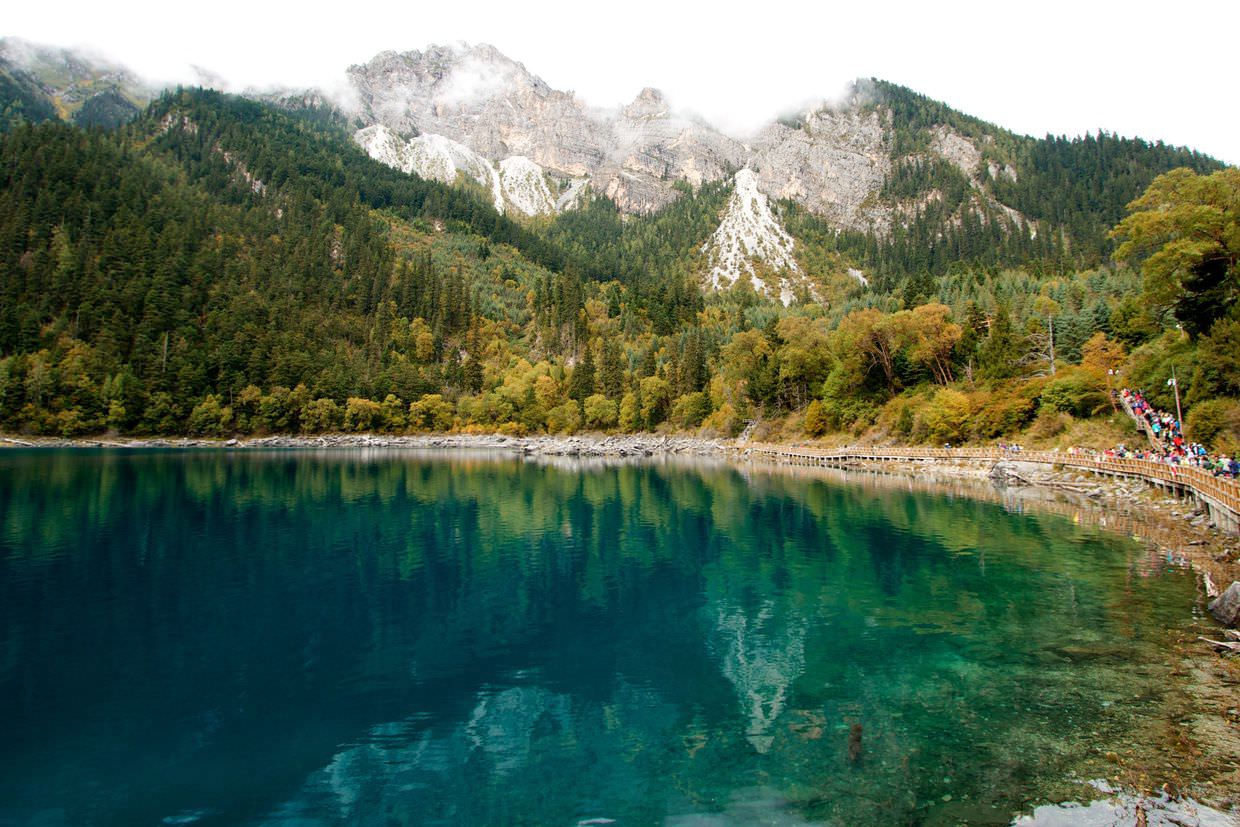
Long lake is the largest and deepest of all the Jiuzhaigou lakes and stretches out over 7km. From the bus stop the shimmering turquoise lake disappears into the distance, guarded by magnificent mountain peaks on either side. It is jaw dropping, and despite the crowds (which arrive in waves) there was enough ambiance and stillness to properly take in our surroundings.
From Long Lake we followed the hoards along the boardwalks, down to five-colour lake, or colourful pond (五彩池, Wǔcǎi Chí). It seems to have many translations. It’s one of the smallest and shallowest lakes, but it is the most radiant, with otherworldly blues and greens. With a landscape so gorgeous it’s hard to take a bad picture, photogenic even with overcast skies. The lake is so bright and colourful the images all look fake. The water was still and the mountains and conifers reflected in the surface. Magical.

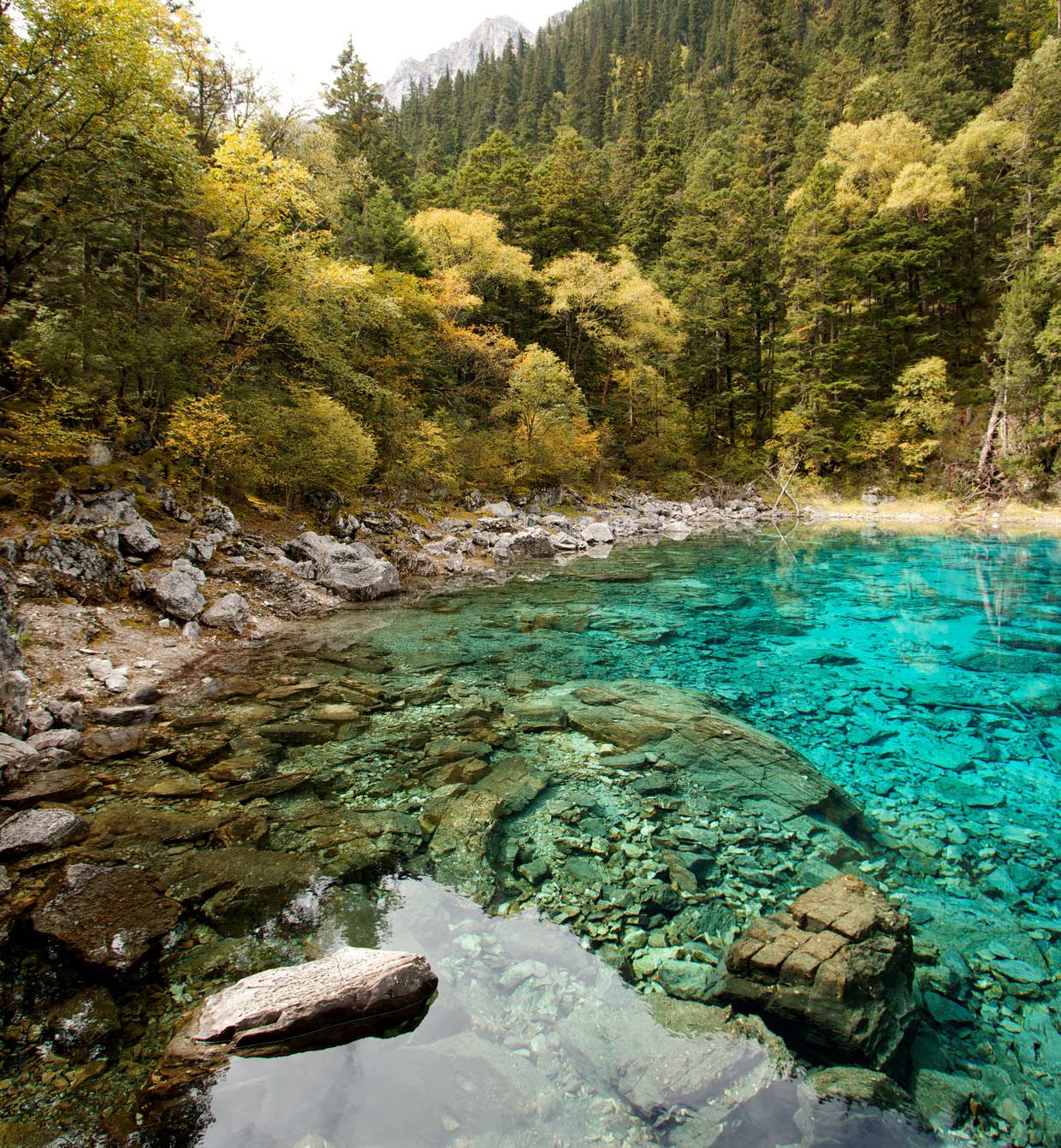
At this time of year The Seasonal lakes (季节海, Jìjié Hǎi); three lakes in this valley (lower, middle and upper), are almost empty so we gave them a miss.
Nuorilang junction
Back on the bus, squeezed between the armpits of Chinese tourists, we returned to Nuorilang junction. To escape the crowds we did the next stretch on foot. Nuorilang waterfall (诺日朗瀑布, Nuòrìlǎng Pùbù) is a picture perfect panoramic, thousands of little streams pour over the rock face; it is the picture on our tickets, and even among the lakes it is a Jiuzhaigou highlight.
We tried capturing some long exposures of the falls, but the paths are boardwalks and our tripod bounced with each passerby. The spray soaked the lens too, and we were content just to watch and listen after that.
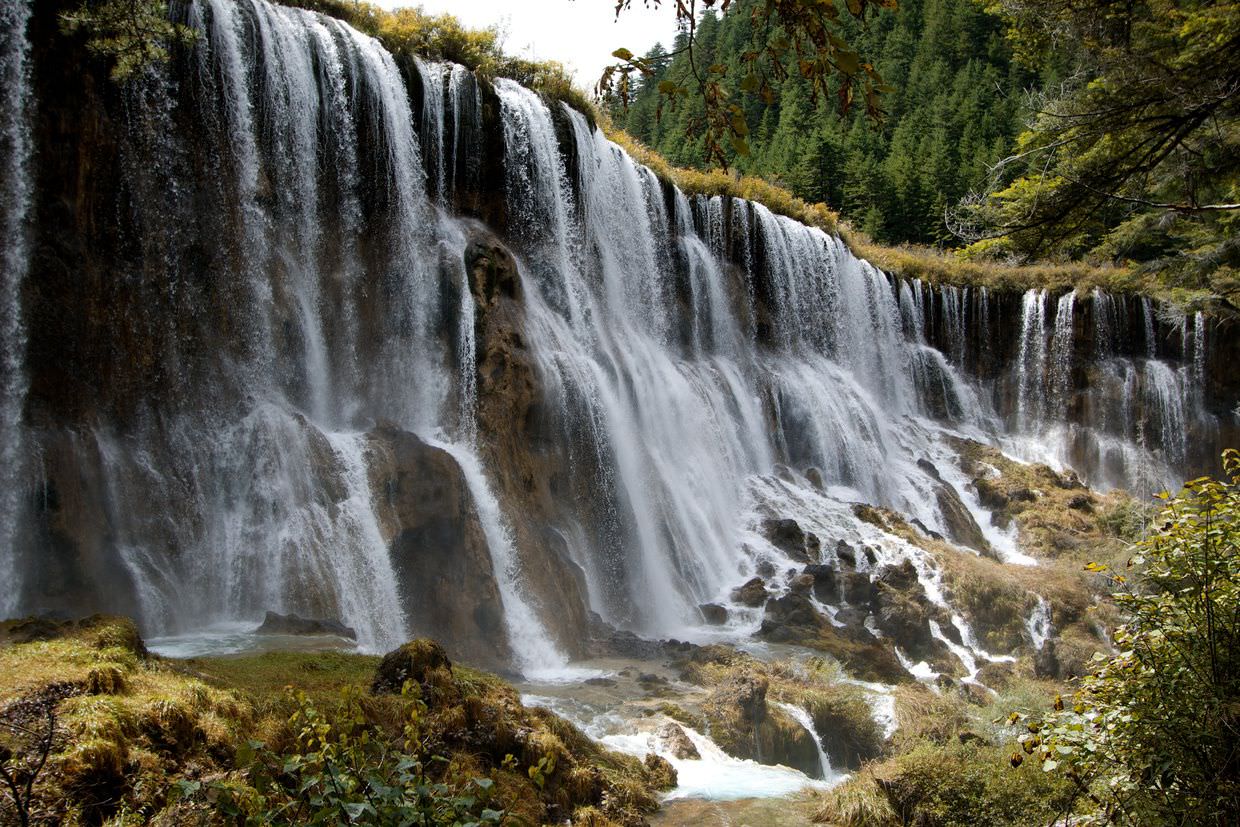
Rize valley
Many of the trails in the park are on the lake side away from the road, and we followed these into the southeastern Rize valley, hiking uphill. It’s peaceful here, with only a few other visitors and the lakes are all the more stunning in the quiet and stillness. From a remote trail near Nuorilang waterfall we found Mirror Lake (镜海, Jìng Hǎi), as you might imagine, it’s famous for its perfect reflections.
Beneath the calm surface fallen trees spread out in a curious underwater landscape, the water is so clear and blue you can see deep into the lake with the right light. From these trees new plants have grown, poking out from the surface to create fantastic reflections. The yellowing autumnal colours across the lake also created a sublime image.
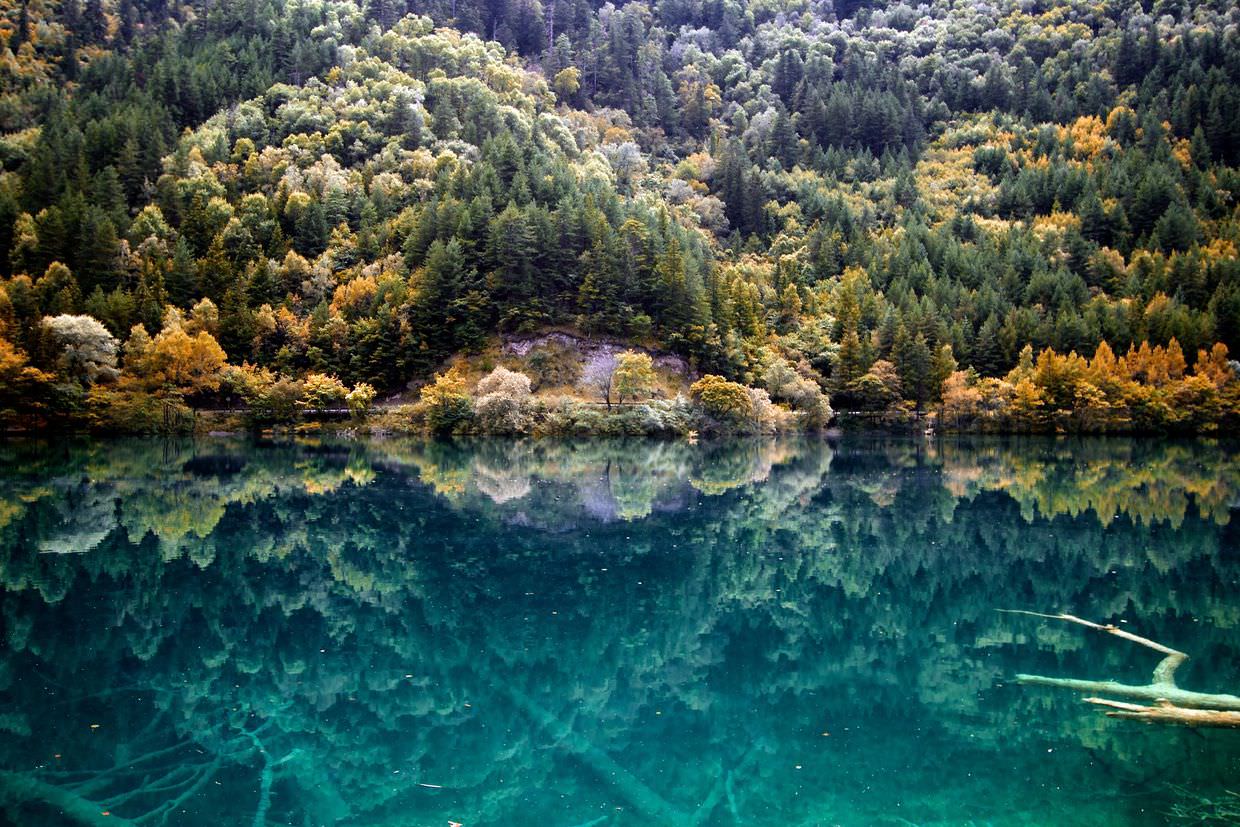
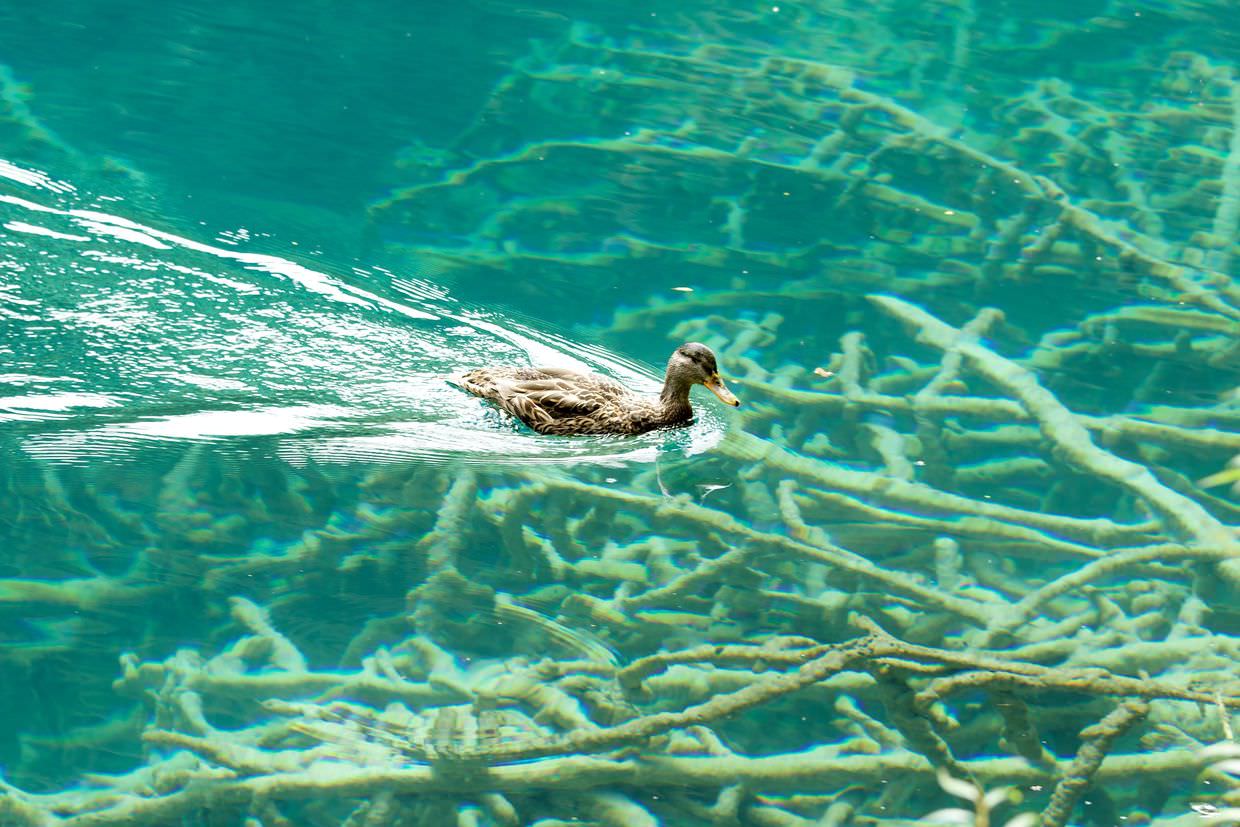
After a cake-heavy picnic, cake smuggled out of breakfast in a plastic bag, we left Mirror lake and continued north to Pearl waterfall. Radically different to Nuorilang, here a thin layer of water falls over an enormous stretch of rock that heads down the valley.
We considered walking up the rest of the valley, but after consulting a map realised how crazy that would be. We found a bus stop, and rode it for 20 minutes to the top. After recommendations from other travellers who’d visited the park, we opted to miss out Swan Lake, Grass Lake and the primeval forest; seeing the views from the bus this seemed like a good idea — while still gorgeous, we couldn’t see everything in just one day.
With the afternoon growing old the crowds were dispersing and the lakes weren’t so crowded. From the bus we stopped at Arrow Bamboo lake (箭竹海, Jiànzhú Hǎi), the site of that Hero scene. We took a few quick pictures then continued south, past Panda lake (熊猫海, Xióngmāo Hǎi), down to another of Jiuzhaigou’s gems, five flower lake (五花海, Wǔhuā Hǎi). Wild Pandas could be in the Jiuzhaigou region maps suggest, but we couldn’t see any of the necessary bamboo forest habitat — legend has it they would come down to panda lake to drink from it, but none have been sighted for years.
Over the afternoon the clouds split up into fluffy white clusters, revealing blue sky behind. As we arrived at five flower lake the sun appeared from behind the clouds, just before it disappeared below the peak of the mountains. We had perhaps 10 minutes of gorgeous light to take pictures. An image of this lake adorns millions of mac computers as a default wallpaper, and today too it looked breathtaking. Like mirror lake, the bottom is layered with ancient fallen trees, and the turquoise water is again magnificent and clear.
At the waters edge three brides were seemingly having their wedding photos taken, though as they left without grooms or family it seems most likely to have been a fashion shoot.

Shuzheng valley
It was 5pm now, and the park closes at 6. We took the bus down towards the exit, but got off to look at the lakes we’d first seen when we arrived. From the large Rhino lake we walked to Tiger lake and then on to the Shuzheng falls and lakes. We thought about walking to the exit, but once again we misjudged the scale of the park. Once on the bus it took another 15mins to get there. This place is enormous, and it’s fabulous that it’s all protected as a national park.

Our driver picked us up and we returned to New Jiuzhai hotel. The road out of town was still bad, for our midday flight we were to leave at 5am. We had a quick evening dinner in the lovely hotel restaurant; Tibetan duck, beef noodles, vegetable noodles and Vietnamese-esque pork spring rolls. We packed and were asleep by 9pm. What a fabulous day.